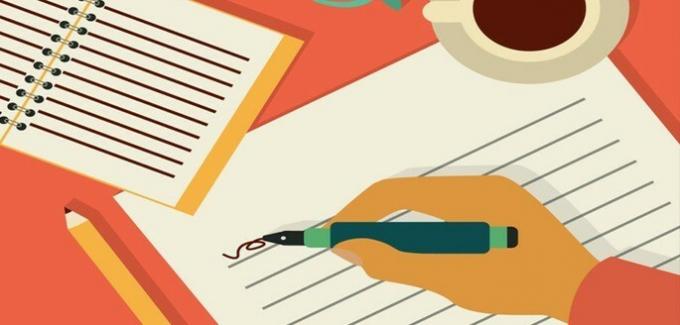The text summary is a mechanism in which only the main ideas of a source text are pointed out, so that a new text is produced, however, in a summarized, abbreviated or synthesized way.
In other words, the abstract is the compilation of the most relevant information from an original text and not a copy.
We can summarize a book, chapter, short story, article, among others. Some specialists point out that the abstract must contain at least 30% of the original document, that is, if a text has 10 pages, the abstract must contain 3 pages.
Without us noticing, we use the summary in different ways in our daily lives. This happens, above all, in informal language, when we tell a fact to friends, a film that was shown in the television, the chapter of the soap opera or the series, the class we were not in or a book we read and want indicate.
What are the 3 types of summary?
Before starting the abstract, check the proposal given by the teacher or by the assessment, as there is three types of summary:
1. Indicative Summary
It summarizes only the important facts, the main ideas, with no examples given from the original text. It is the most requested type of summary in schools.
2. Informative Summary
Summarizes the qualitative and quantitative information and/or data expressed in the original text. It is confused with the records and is usually used in academic texts.
3. Critical Summary
Called a review or review, it summarizes the information in the original text, to which the opinions of the author and whoever writes the abstract are added.
How to make a good text summary?
It may seem like an easy task, but often synthesizing something can be laborious and requires some important techniques, although the most efficient technique is practice.
Note that the text summary is very helpful in learning to facilitate memorization, understanding and interpretation, and it cannot be a very long text; it has to be less extensive than the original.
However, be careful, because generally in the summary we should not add new ideas, that is, express opinions or make personal comments about the subject discussed.
This type of assessment is made in critical reviews, also called critical summary.
In addition, it is advisable not to copy excerpts or sentences from the original text. So, be empowered to write in your own words.
In this way, the abstract must have a good clarity of ideas, that is, a person who has not read the original text must fully understand what was read.
So, to assist you in this task, follow below step by step to complete a summary:
1. Carefully read the original text
A careful and calm reading is very important to begin this task and thus become familiar with the theme or subject covered in the text.
It's no use skimming and wanting to summarize any information. If necessary, read it again. In fact, an abstract can be longer (if it's from a book), medium or short.
2. Check the main ideas in the text
Once read, you should mark the main ideas of each paragraph. But, be careful that it doesn't get too long.
For example, if you're summarizing a book, it's impossible to summarize each paragraph, so consider summarizing the chapters.
3. Underline the keywords
Just like the step above, you should think about the main words of the text to make the summary.
All of them must be part of the text produced and usually each paragraph has a keyword.
4. Have the power of synthesis
Synthesizing the text may not be easy, but once you've organized the main ideas, write them clearly and cohesively.
Keep an eye on the theme and conclusion offered by the author of the text.
Read too How to make a synthesis?
5. Beware of cohesion and coherence
For a text to be considered good, cohesion and coherence are two basic and very important resources in the production of texts.
Cohesion is closely related to grammatical rules and the good use of connectives. So, if you don't know the meaning of a word, look it up in the dictionary or avoid using it.
Coherence implies the logic and context in which the text is inserted. Remember that the abstract is not a tangle of loose sentences, it needs to make sense to the reader.
6. take a final reading
Once produced, it is very important to make a final reading of the abstract and compare if the underlined ideas are all contained in the text.
So be careful with secondary ideas, which can make your text lengthy. To make this step easier, read the text aloud or to a friend. If he understands everything, your summary is ready.
7. Don't forget to cite the source.
It is very important to indicate where our abstract came from, that is, the data of the text we are summarizing: author, work, pages, chapters, publisher, year of publication, among others.
Generally, this type of information is more used in academic texts being called bibliography.
Text Summary Template: Examples
To better understand the concept of summary, see three summary templates in the articles:
- Indicative Summary: Clarice Lispector's Hour of the Star.
- Informative Summary: The Posthumous Memoirs of Bras Cubas.
- Critical Summary: Critical Review.
Read too How to make a summary? Essential Tips (with examples)

